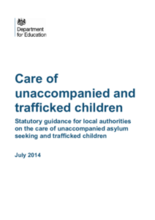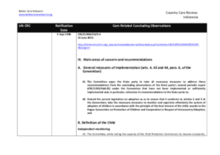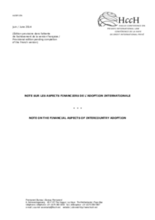Displaying 321 - 330 of 467
This article argues that orphanage voluntourism fuels the displacement and trafficking of children from their families in Nepal and their unnecessary institutionalisation.
This report from Family for Every Child and partners summarises research on children’s reintegration that took place in Mexico, Moldova and Nepal from 2011 to 2014.
This piece, written by Aselefech Evans, a woman adopted from Ethiopia when she was five years old, addresses the issue of family preservation and international adoption.
This article examines the recruitment and transportation of internally trafficked children from Benue State in the north-central geo-political zone of Nigeria to Oyo State in the south-western zone of Nigeria
This guidance sets out the steps local authorities should take to plan for the provision of support for looked after children who are unaccompanied asylum seeking children and child victims of trafficking.
This article discusses the challenges in protecting Guatemalan children and their families from involuntary separation and presents the process, results and implications of a pilot training in which Guatemalan participants from government and civil society explored the efficacy and feasibility of the FGC model in their country.
This country care review includes the care related Concluding Observations adopted by the Committee on the Rights of the Child as part of its examination of the third and fourth periodic reports of Indonesia (CRC/C/IND/CO/3-4) during its 65th Session at its 1890th and 1891st meetings held on 5 June 2014, and adopted, at its 1901st meeting, held on 13 June 2014.
This country care review includes the care related Concluding Observations adopted by the Committee on the Rights of the Child as part of its examination of the second to fourth periodic reports of Saint Lucia (CRC/C/LCA/2-4) during its 65th Session at its 1892nd and 1893rd meetings held on 6 June 2014, and adopted, at its 1901st meeting, held on 13 June 2014.
This report documents a study of the reintegration of child domestic workers in Nepal.
To address the issues related to the financial aspects of intercountry adoptions, the Hague Convention initiated an Experts’ Group, which met in October 2012 and produced nine Conclusions and Recommendations, which they brought to the Permanent Bureau to publish as a “Note”.






